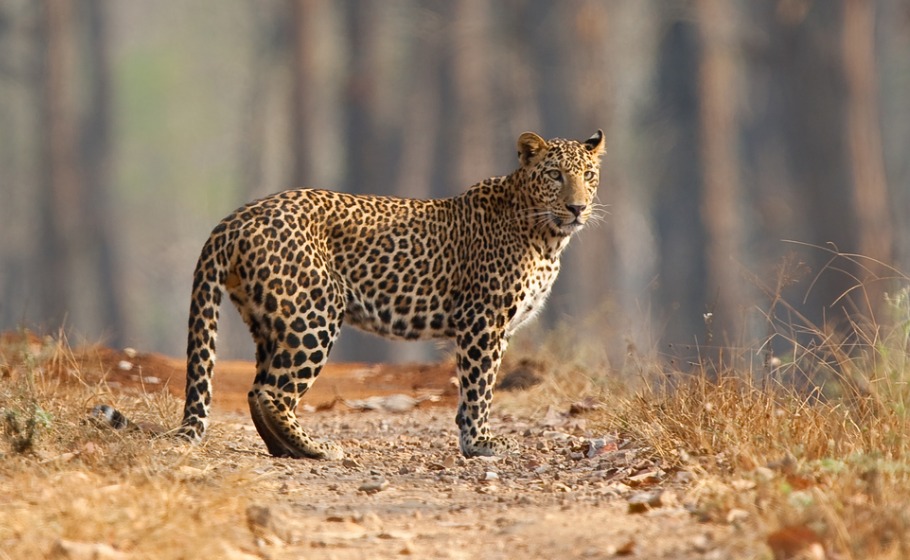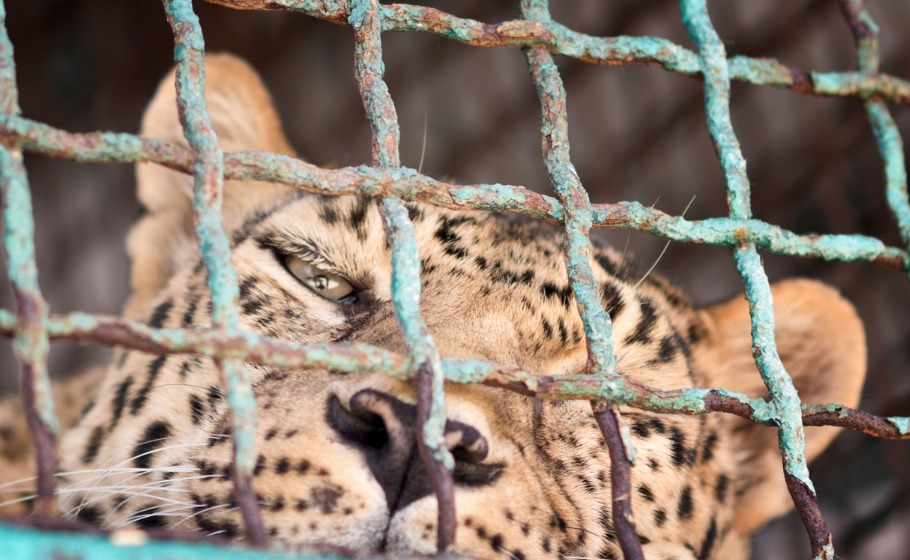
Leopard count rises, but man-animal conflict remains a worry in TN
While the recently released 'Status of Leopards in India Report 2018' has shown a rise in leopard count across the country, frequent and increasing incidents of man-animal conflict remain a worry for those residing in the Western Ghats region of Tamil Nadu.

While the recently released ‘Status of Leopards in India Report 2018’ has shown a rise in leopard count across the country, frequent and increasing incidents of man-animal conflict remain a worry for those residing in the Western Ghats region of Tamil Nadu.
According to the report, released on December 21, the number of leopards in India have increased from nearly 8,000 in 2014 to about 12,852 in 2018. In Tamil Nadu, there were 868 leopards in 2018 as against 815 in 2014.
Though the rise in the big cat’s population is a reason for celebration from the conservation point-of-view, incidents of man-animal conflict in the last few years have created an atmosphere of fear among the people.
Related news | How human hysteria in Pune exhausted a bison to death and the lessons learnt
Besides, this year, three leopards were found dead: one in Erode district in January and the other two in the Nilgiris in July and October.
Last year, a leopard mauled 12 goats to death in Erode while in 2018, one of the big cats reportedly attacked two women at Valparai in July, resulting in the death of one of them. Last December too, five persons were attacked by a leopard in Vellore.
No documentation
Shockingly, while tiger and elephant deaths and the human deaths caused by them are well documented, no such data is maintained regarding the leopards. Activists allege that though the media at times reports the deaths, many such cases skip public attention due to ignorance of forest officials.
“Compared to tigers, the leopard population is higher and that’s why there is no major focus on it. So leopard deaths or attacks are not documented,” said N Mohanraj, advisor, WWF-India.
Related news | Man-wild conflict in Wayanad triggers debate on tiger reserve, tribes’ ouster
However, there are some NGOs that document leopard deaths. According to Wildlife Protection Society of India, in 2019 alone, a total of 129 leopards were killed due to poaching across the country. But poaching isn’t the only reason behind leopard deaths in India. While poaching remains rampant in northern India, in the Western Ghats retaliatory killing by the humans is the main reason for leopard deaths, according to experts.
“While tigers prey mostly on the deer species, leopards feed on dogs, cattle, wild boar, etc. It’s not important whether the leopard count has increased within tiger reserves or outside the reserves. If there are no adequate prey bases inside their habitat, they would come out in search of food and attack the cattle, and in a retaliatory measure get poisoned by the humans,” said V Ganesan, a former wildlife official.
Upgradation of forest department needed

In Western Ghats, tribals and non-tribal natives are migrating to the plains and people from the plains are migrating to the hills. They lack knowledge about forests and wildlife which puts them in a fix, said Mohanraj.
“Land is cheaper near the edges of forests, so people are buying land there and building houses. Most of them are labourers working in tea plantations. Due to lack of restroom facilities in their houses, they use forests to relieve themselves. The leopards presume them as animals and attack,” he said.
According to him, there is no way to prevent an animal from entering into human habitats. However, the conflict between humans and animals can be reduced, he added.
Related news | Study shows 75-90 % decline in Leopard population in India
“The forest department should hire more tribals having knowledge about forests and animals. But now, mostly people from urban background are being recruited. So when an animal enters their habitat, they don’t know how to handle it. Similarly, when an animal enters a village, it becomes a law and order problem. The police must cooperate with forest officials and work together to capture them as early as possible. Most importantly, we need to use technologies like drones to easily monitor the movement of such an animal and alert the people to reduce human and economic loss,” Mohanraj said.
Need holistic understanding
“Unlike tigers, leopards have the ability to live in the vicinity of human habitations. They are known for preying on dogs and thus most of them used to have dog ticks in their bodies,” said Chennai-based wildlife photographer T Murugavel. The fragmentation of forests is another reason why leopards have started entering human habitations, he added.
“Unless the forest department expands the buffer zone and prevents the cattle from grazing inside protected areas, the man-animal conflict is not going to be resolved anytime soon,” Murugavel stressed.
But has the government done anything to increase the forest cover?
“Technically, plantations also come under forests. But they serve only for human greed and not for wildlife. Unless we have a holistic understanding of a particular landscape, we cannot have a long term solution. What the forest department is doing nowadays is day-to-day management. They feel complacent when they capture an animal that enters a human habitat and think their job is over. That’s not going to work,” said Ganesan.


